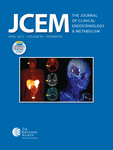JCEM:溃疡性结肠炎患者有更高的低骨矿密度患病率
2013-04-30 JCEM dxy
炎症性肠病的患者常常伴有低骨矿密度(BMD)。为了在溃疡性结肠炎(UC)的男性患者中间,评估低BMD(骨质疏松或低骨量)和脆性骨折的患病率和预测因子,来自美国新奥尔良市杜兰大学医学院的Nabeel Khan博士及其团队进行了一项研究,该研究发现男性UC患者低BMD患病率高于普通人群。该研究结果在线发表在2013年4月17日的美国《临床内分泌代谢杂志》(The journal of clinical
炎症性肠病的患者常常伴有低骨矿密度(BMD)。为了在溃疡性结肠炎(UC)的男性患者中间,评估低BMD(骨质疏松或低骨量)和脆性骨折的患病率和预测因子,来自美国新奥尔良市杜兰大学医学院的Nabeel Khan博士及其团队进行了一项研究,该研究发现男性UC患者低BMD患病率高于普通人群。该研究结果在线发表在2013年4月17日的美国《临床内分泌代谢杂志》(The journal of clinical endocrinology & metabolism)上。
该研究是一项回顾性的数据分析,在全国退伍军人(VA)医疗保健系统中进行。入选2001至2011年期间在VA系统随访的、使用ICD–9编码确认的男性UC患者。使用ICD–9编码确认患者伴有低BMD和脆性骨折。利用药物数据评估患者类固醇暴露情况。使用多元分析确定全身性类固醇对低BMD和脆性骨折风险的独立影响。
该研究结果表明,确认了34665例患者,在他们中间,31%使用类固醇。那些使用类固醇和没有使用类固醇患者中间低BMD患病率分别为15.8%和7.1%,P<0.001。那些伴有骨质疏松、低骨量和那些不伴有低BMD患者的脆性骨折患病率分别为7.9%、4.4%和1.1%,P<0.001。类固醇暴露显示剂量反应模型,在控制其他可能的预测因子后,与非类固醇使用者相比,强的松暴露累积大于11136mg(十等分)的患者更有可能发生低BMD(OR=8.9,P<0.001)和脆性骨折(OR=1.8,P<0.001)。
该研究发现,在这个全国性的队列中,低BMD的患病率高于普通男性人群报道的数据。类固醇使用的累积与低BMD风险之间密切相关。类固醇和低BMD是脆性骨折的独立危险因素。
与结肠炎相关的拓展阅读:
- Microbiome:新型标志物或可识别婴儿坏死性小肠结肠炎风险
- JPGN:粪便移植或可治疗溃疡性结肠炎
- APT:周末手术治疗溃疡性结肠炎增加并发症风险
- ALIMENT PHARM THERAP:他克莫司显示对难治性溃疡性结肠炎有短期疗效
- FDA批准Humira用于治疗某些溃疡性结肠炎患者 更多信息请点击:有关结肠炎更多威廉亚洲官网

Prevalence and Predictors of Low Bone Mineral Density in Males with Ulcerative Colitis.
Abstract
Context:Low bone mineral density (BMD) is common in patients with inflammatory bowel diseasesObjective:To assess the prevalence and the predictors of low BMD (osteoporosis or osteopenia) and fragility fractures among men with Ulcerative Colitis (UC).Design:Retrospective database analysis.Setting:Nationwide Veterans Affairs (VA) healthcare system.Patients:Male UC patients who were followed in the VA system between 2001 and 2011 were identified using ICD-9 codes.Main Outcome Measures:We identified patients with low BMD and fragility fractures using ICD-9 codes. Steroids exposure was assessed using pharmacy data. Multivariate analysis was used to identify the independent effect of systemic steroids on the risk of low BMD and fragility fractures.Results:We identified 34,665 patients. Among them, 31% used steroids. Prevalence of low BMD was 15.8% and 7.1% among those who used and did not use steroids respectively, p<0.001. Prevalence of fragility fractures was 7.9%, 4.4% and 1.1% for those with osteoporosis, osteopenia and those without low BMD respectively, p<0.001. Steroids exposure showed dose-response pattern, patients who had accumulative prednisone exposure of >11,136 mg (tenth decile) were more likely to develop low BMD (OR=8.9, p<0.001) and fragility fractures (OR=1.8, p<0.001) as compared to non-steroids users after controlling for other possible predictors.Conclusion:In this nationwide cohort, prevalence of low BMD was higher than what was reported for the general male population. There was a strong correlation between the cumulative steroid utilization and the risk of low BMD. Both Steroids and low BMD were independent risk factors for fragility fractures.
本网站所有内容来源注明为“williamhill asia 医学”或“MedSci原创”的文字、图片和音视频资料,版权均属于williamhill asia 医学所有。非经授权,任何媒体、网站或个人不得转载,授权转载时须注明来源为“williamhill asia 医学”。其它来源的文章系转载文章,或“williamhill asia 号”自媒体发布的文章,仅系出于传递更多信息之目的,本站仅负责审核内容合规,其内容不代表本站立场,本站不负责内容的准确性和版权。如果存在侵权、或不希望被转载的媒体或个人可与williamhill asia 联系,williamhill asia 将立即进行删除处理。
在此留言








#JCEM#
57
#溃疡性#
44
#JCE#
66
#患病率#
50